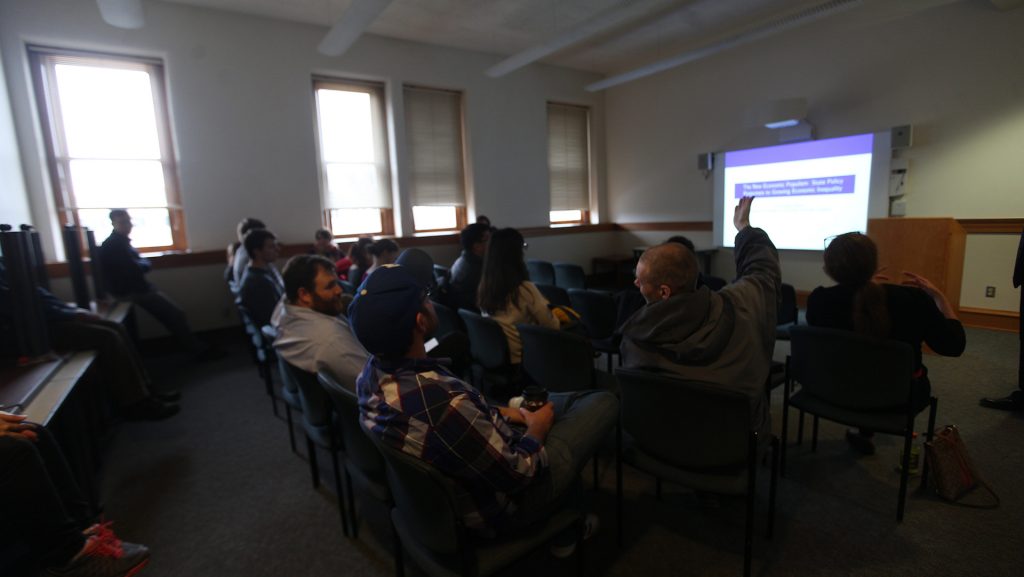Supplemental Instruction, a peer-facilitated tutoring program, has had a significant effect on retention rates and the grades of students at the University of Iowa, a report has shown.
The recently released state Board of Regents annual graduation and retention report looked into Supplemental Instruction, an academic support program offered for 20 courses at the UI.
“Like all universities, some courses are harder than others,” UI President Bruce Harreld told the regents Feb. 22. “We’ve decided to focus on 20 courses with a high drop-out and fail rates, which obviously negatively impacts students’ ability to graduate.”
Some of the courses offered in Supplemental Instruction include Math For Business, General Chemistry I, College Algebra, and Foundations of Biology.
“By focusing resources on these harder courses, the UI has seen a 6 percent improvement in the retention rate of those students who access Supplemental Instruction compared with those who did not,” Harreld said.
RELATED: UISG advocates for more Academic Support & Retention funding
The number of visits to Supplemental Instruction has largely increased in recent years. Visits rose from 7,000 in the 2014-15 academic year to more than 20,000 in the 2016-17 academic year.
“This is really growing as support for students,” said Mirra Anson, the director of Academic Support and Retention.
Anson said the more often students come to Supplemental Instruction for academic support, the better grades they earn in the class compared with their peers.
The Academic Support and Retention End of the Year Report found that in the 2016-17 academic year, students who attended Supplemental Instruction one to 10 times had a 0.106-point boost on their grades on a four-point scale, and students who attended Supplemental Instruction more than 25 times had a 0.585-point increase.
“We’re seeing it has this positive effect not only on grades and student retention but also that it’s helping with progress to degree in a particular program of study,” Anson said. “I think that’s really important to know that yes, it’s critical for that first-year [retention], but if we’re looking at students, whatever their program may be and particularly those STEM-related fields, what is the role of Supplemental Instruction in helping those students make that timelier progression to their degree.”
RELATED: UI addresses retention and graduation rates revealed in new report
The Academic Support and Retention End of the Year Report found that retention of first-year students enrolled in Supplemental Instruction courses was 95.2 percent in spring 2016 compared with 89.1 percent retention of first-year students who did not use the program.
Associate Dean of University College Andrew Beckett emphasized the need to build up Supplemental Instruction because of the effect it has on student retention and academic success.
“We’ve increased participation 40 percent almost every year,” Beckett said. “I think a lot of this is just trying to change students’ attitudes toward tutoring and seeking help.”
Harreld stressed that with more resources, the UI can expand the program.
“Total resources, in fact, matter. It shouldn’t be surprising,” he said. “[Institutions] that have more resources per student have higher four-year graduation rates.”
Anson said her office is always looking for ways to improve Supplemental Instruction.
“… We are always looking at how we can allocate more resources to Supplemental Instruction so we can offer it for more than 20 courses,” Anson said. “We do see that it has such positive outcomes on student learning and student retention.”










